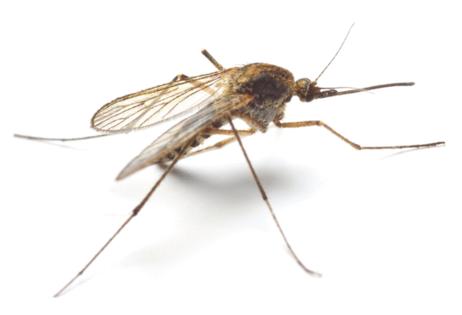Scripps Research works to give old anti-malaria drug better staying power
Published in Health & Fitness
SAN DIEGO — A new clinical trial from Scripps Research in La Jolla aims to make significant gains in the global fight against malaria by making a drug that has been around since the 1970s last longer.
Working with a contract drug manufacturing and testing firm in the United Kingdom, 25 to 30 healthy volunteers are starting to receive the first doses of a new drug that is a long-acting enhancement of atovaquone, part of Malarone, the once-daily malaria-prevention medication often prescribed to travelers.
Malaria is a potentially life-threatening disease found mostly in tropical countries that is spread to humans by some types of mosquitoes. Symptoms can include fever, chills, headache, fatigue, confusion, seizures and difficulty breathing.
Arnab Chatterjee, vice president of medicinal chemistry at Scripps Research’s Calibr-Skaggs Institute, said chemists including Anil Gupta, director of medicinal chemistry, used a “prodrug” approach, attaching an inert molecule to a cloned version of atovaquone that causes it to remain in muscle tissue after being injected, slowly entering the bloodstream. Once in circulation, enzymes cut away the time-release chemical, setting atovaquone free to do its malaria-fighting work.
And that work, Chatterjee said, is quite significant, effectively preventing malaria after the bite of an infected mosquito.
“It’s 99% efficacious,” he said.
The drug, in its oral form, must be taken daily and has been considered too expensive, especially in countries with fewer resources, to use in broad-based prevention campaigns. But the long-acting version now entering testing shows promise of lasting about three months, which, if proved safe and effective in human trials, could provide a way to inoculate whole regions.
Going the injectable route also would be a more efficient use of atovaquone because less of the chemical is needed when it doesn’t need to be digested, as is the case with oral dosing.
“This could be really powerful somewhere like Sahel (Africa), where there is a defined rainy season and a defined period of time when mosquitoes are present,” Chatterjee said. “You can basically use the rains to predict when you are going to need this and be able to give a large group of people a single shot that protects them for an entire year.
“If you lived in an area with year-round malaria, like Thailand, you would need to take it every three months.”
The idea already has passed muster with an external authority. Scripps Research is working with Medicines for Malaria Venture, a Swiss not-for-profit organization that works to bring affordable drugs to places where malaria kills an estimated 600,000 people per year.
If Phase 1 trials detect no serious side effects, broader trials to prove efficacy could start in 2026.
A similar technique is underway for the prevention of HIV infection. In that effort, Scripps scientists are working with drug giant Merck to test a long-acting prodrug injectable of two HIV drugs made by Merck and Gilead, which licensed the development candidate in January 2024 after it successfully navigated initial safety trials.
_____
©2025 The San Diego Union-Tribune. Visit sandiegouniontribune.com. Distributed by Tribune Content Agency, LLC.










Comments